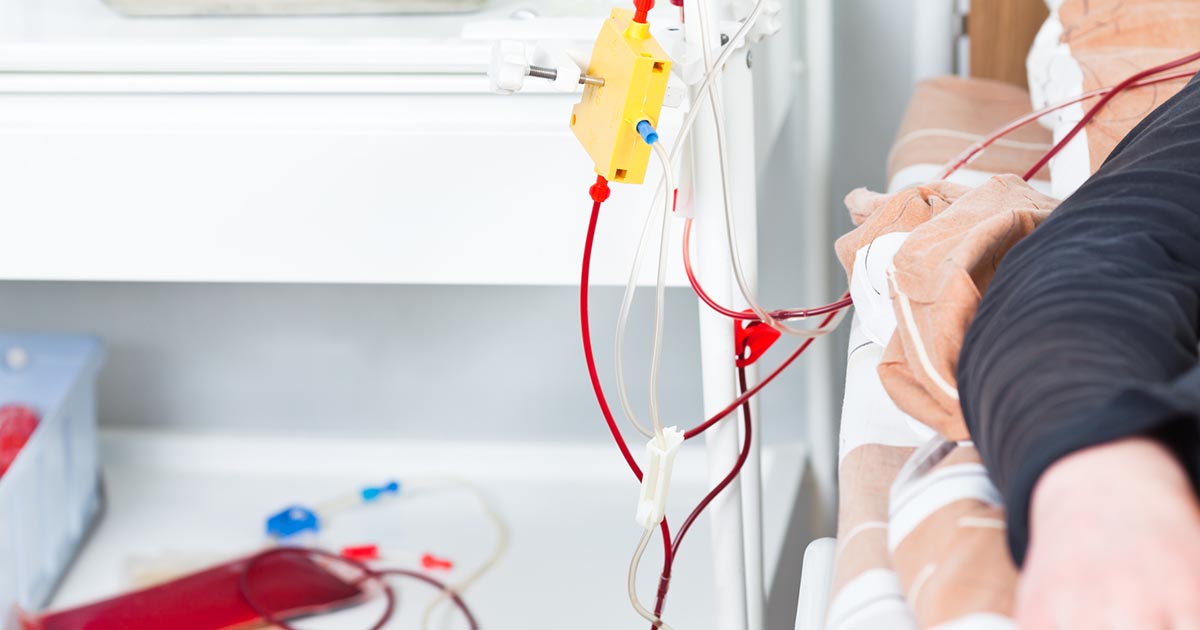Guide To Treating Lambert-Eaton Myasthenic Syndrome
Lambert-Eaton myasthenic syndrome is best described as an autoimmune disorder where the immune system attacks healthy nerve cells located in the neuromuscular junctions. These junctions are where the muscles connect to nerves, which are responsible for communicating with the muscle cells that cause the muscles to move in a certain way. Lambert-Eaton myasthenic syndrome interferes with the process of communication, and it does so by using antibodies to attack these nerve cells. The antibodies inhibit the nerve cells from producing sufficient amounts of a chemical called acetylcholine, which is responsible for the transmission of impulses between muscles and nerves. A lack of it results in problems with being able to move the muscles normally. Common symptoms associated with Lambert-Eaton myasthenic syndrome include muscle weakness, difficulty walking, tingling in the feet or hands, difficulty breathing, changes in the bladder and bowel, and excessive fatigue.
Learn about the options for treating Lambert-Eaton myasthenic syndrome now.
Potassium Channel Blockers

Because there is no current cure for Lambert-Eaton myasthenic syndrome, no known method can inhibit the immune attack that causes interference in the nerve to muscle communications. Even though nothing can be done about that specifically, alterations can be made to the electrical activity passing through the affected areas. Potassium channel blockers are able to increase the duration of the electrical activity when it passes through the neurotransmitter junction. This increases the release of acetylcholine and the influx of calcium into the ending of the nerve. Due to the fact Lambert-Eaton myasthenic syndrome acts to stop the production of acetylcholine, the use of potassium channel blockers can help neutralize that effect by stimulating the release of larger amounts of acetylcholine. Ultimately, the result of this neutralization is neuromuscular transmission is enhanced, and muscle weakness is reduced. This type of channel blockers can also help reduce other symptoms, including tingling in the hands and feet, problems walking or breathing, and excessive fatigue.
Uncover details on more treatments for Lambert-Eaton myasthenic syndrome now.
Intravenous Immunoglobulin

Intravenous immunoglobulin helps modulate the immune system to where it temporarily stops attacking the nerve cells. Immunoglobulin therapy is a way in which the physician can help manipulate the defective immune system into deactivation of the mechanisms acting on the neuromuscular junctions. There are, however, limitations of intravenous immunoglobulin when it comes to autoimmune disorder treatment such as in Lambert-Eaton myasthenic syndrome. This type of therapy will remove the harmful antibodies the immune system is producing that interfere with nerve communications. However, it will not stop the immune system from its abnormal production of such antibodies. This is most likely the reason why intravenous immunoglobulin is considered a temporary solution. It is also a treatment often used in conjunction with other methods for optimal effectiveness.
Continue reading to reveal more Lambert-Eaton myasthenic syndrome treatments now.
Plasmapheresis

Plasmapheresis describes the process through which blood is removed from the body, filtered of certain elements, and returned back to the body. When the blood is removed and sent into the machine, plasma is separated from the other parts of the blood. The machine then keeps unhealthy plasma that contains the destructive antibodies, and it sends healthy plasma back in its place. In some cases, plasmapheresis can stop the immune system from producing harmful antibodies for a short period in addition to their initial removal. In other cases, plasmapheresis is limited to only filtering out the defective antibodies. Either way, this treatment is also a short term solution used in addition to other methods. If a patient with Lambert-Eaton myasthenic syndrome is experiencing severe symptoms such as issues with walking, talking, breathing, and extreme fatigue upon diagnosis, plasmapheresis can be used to improve symptoms while other longer acting medications are started.
Get familiar with more ways to treat Lambert-Eaton myasthenic syndrome now.
Immune Therapy

Immune therapy or immunosuppressants are a type of medication that decreases the strength of the body's immune system and function. While the use of these medications in healthy individuals sounds counter-intuitive, the use of immunosuppressants in individuals with autoimmune conditions can actually be beneficial. These drugs have a weakening effect on the overactive immune system of Lambert-Eaton myasthenic syndrome patients. The objective of immune therapy is to reduce the severity of the inflammatory response that results in communication disruption between the nerves and the muscle cells. This treatment is shown to be moderately successful, but it may not eradicate all of the defective antibodies in the immune system. In addition, there are adverse effects of being on immunosuppressants, including the increased susceptibility of contracting an illness. This happens because the healthy parts of the immune system are suppressed in addition to the harmful parts.
Learn more about how to treat Lambert-Eaton myasthenic syndrome now.
Cholinesterase Inhibitors

Cholinesterase inhibitors are drugs that stop the body from its normal breakdown process of the neurotransmitter called acetylcholine. The body uses an enzyme called acetylcholinesterase to break acetylcholine down into a substance that is no longer active. Lambert-Eaton myasthenic syndrome causes a decrease in the production of the neurotransmitter acetylcholine to begin with. Thus, the symptoms can be treated by using a drug to stop the body from undergoing the normal breakdown process of that neurotransmitter. If an individual who does not have Lambert-Eaton myasthenic syndrome takes cholinesterase inhibitors, it could result in a harmful hyperactive state of the nervous system from excessive impulse conduction. The utilization of these drugs essentially increases the overall concentration of the neurotransmitter acetylcholine, which will help the impulses travel normally between the muscle cells and the nerve cells. Cholinesterase inhibitors do not work as rapidly as other temporary forms of treatment for Lambert-Eaton myasthenic syndrome. However, they do effectively reduce muscle weakness and other problematic symptoms such as fatigue, difficulty walking, eyelid drooping, and tingling sensations in the extremities.
